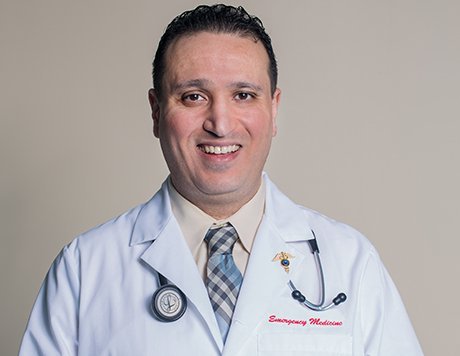By Dr. Ashraf Salem, MD
Founder & Chief Medical Officer
Brooklyn Urgent Care Center

At BROOKLYN URGENT CARE we see many people suffering from various kinds of pain including arthritis on a daily basis. Not many of those who suffer greatly from arthritis pain know exactly what are the causes; now to live with this sometimes crippling pain, and what can be done to get relief. So I’ve decided in this article to address the question:
Exactly what is arthritis.
Rheumatoid arthritis vs. osteoarthritis
Simply put arthritis is inflammation of one or more of your joints. The main symptoms of arthritis are joint pain and stiffness that typically worsen with advancing age. The two most common types of arthritis are osteoarthritis and rheumatoid arthritis.
First off, osteoarthritis causes cartilage — the hard, slippery tissue that covers the ends of bones where they form a joint — to erode or break down. On the other hand rheumatoid arthritis is an autoimmune disorder that first targets the lining of your joints. Uric acid crystals, infections or an underlying disease, such as lupus, can cause other types of arthritis. Today, treatments vary depending on the type of arthritis. However, the main goal of any arthritis treatments prescribed by your doctor is to reduce symptoms, improve your quality of life and mobility, thus giving you a greater independence.
Symptoms
The most common signs and symptoms of arthritis involve the joints. Depending on the type of arthritis you have, your signs and symptoms may include:
- Pain
- Stiffness
- Swelling
- Redness
- Decreased range of motion
The Causes of Arthritis
There are two main types of arthritis — osteoarthritis and rheumatoid arthritis — and they damage joints in different ways.
Osteoarthritis
Osteoarthritis is the most common form for arthritis and involves wear-and-tear damage to your joint’s cartilage — the hard, slick coating on the ends of your bones. Enough damage can result in bone grinding directly on bone, which causes pain and restricts your movements. This wear and tear can occur over many years, or it can be hastened by a joint injury or infection.
Rheumatoid arthritis
In rheumatoid arthritis, the body’s immune system attacks the lining of the joint capsule, a tough membrane that encloses all the joint parts. This lining becomes inflamed and swollen. The disease process can eventually destroy cartilage and bone within the joint.
Your Risk factors
Risk factors for arthritis include:
- Family history.Some types of arthritis run in families, so you may be more likely to develop arthritis if your parents or siblings have or had the disorder. Your genes can make you more susceptible to environmental factors that may trigger arthritis.
- The risk of many types of arthritis — including osteoarthritis, rheumatoid arthritis and gout — increases with age.
- Your sex.Women are more likely than are men to develop rheumatoid arthritis, while most of the people who have gout, another type of arthritis, are men.
- Previous joint injury.People who have injured a joint, perhaps while playing a sport, are more likely to eventually develop arthritis in that joint.
- Carrying excess pounds puts stress on joints, particularly your knees, hips and spine. Obese people have a higher risk of developing arthritis.
Complications
In many cases, severe arthritis, particularly if it affects your hands or arms, can make it difficult for you to do simple daily tasks. Arthritis of weight-bearing joints can keep you from walking comfortably or sitting upright. In some cases, joints may become twisted and deformed.
Treatment
Arthritis treatments can include doctor prescribed medications, natural treatments, pain management and in acute cases surgery. Please speak to your healthcare provider if you suffer from arthritis or visit Brooklyn Urgent Care (www.BKUC.org )
[If you have questions or comments email Dr. Salem at asalem@bkuc.com ]






















































 and then
and then